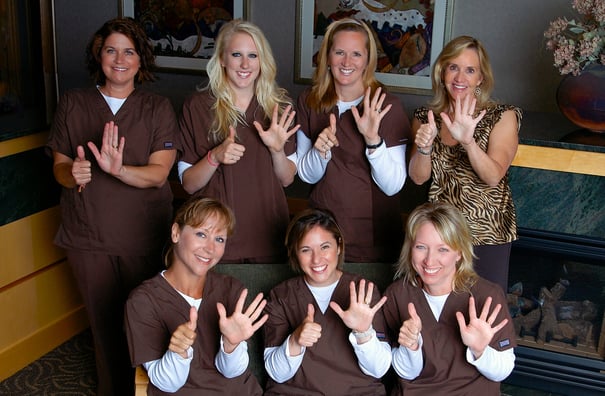A Team Exercise for Patient Education: Staying in the Question
by Clinical Mastery, on 6/2/16 1:04 PM
By Dr. Lee Ann Brady
Imagine this: You’re sitting in the consultation room and meeting with a patient for the first time. They ask you a question about the difference between two types of treatment. Your mind goes into automatic mode as you list off the differentiations you know by heart.
As you continue to provide technical information, you notice the patient’s focus seems to be wavering, but you continue to answer to the best of your ability. When they leave the appointment, they seem less certain about the treatment you are suggesting…
I would hazard a guess that you didn’t answer the question they meant to ask, because you didn’t really listen. Maybe what they really wanted to know was whether one treatment is more painful or more expensive than the other. But you didn’t give them the opportunity to communicate their real concerns.
Helping patients move forward with their care – whether it’s short-term orthodontics or any cosmetic dentistry that follows – is all about your ability to listen. That’s where “staying in the question” can work to your benefit.

An Attitude of Curiosity
Staying in the question is a way you can re-think your relationship with patients. If you want to improve patient communication, you must take on an attitude of curiosity. What I mean by this is that you treat listening as a skill and make a concentrated effort to pay attention to the patient.
For example, when they ask you a question about treatment, make sure you are actually answering the question they want to know. Don’t make assumptions and rely solely on technical knowledge to run the show. Clinical training makes you want to give answers quickly, but it’s better to take your time to follow the patient’s lead.
Staying in the question means literally remaining focused on the question they have asked and how you can better understand their meaning.
What many dentists do not know is that the best learning occurs when we are speaking. As a result, when you are the one doing all of the talking in an appointment, the patient learns very little.
You can assist your patients in developing ownership of their condition and their desire for improved dental health. You just need to believe that what they ask and tell you are incredibly valuable.
The Exercise:
To practice staying in the question, find a partner and give yourself a 5-minute time limit. During that time, you’ll begin with one question (a broad question). After that, every question should be based upon your partner’s responses.
Let them invite you into the conversation they want to have. My experience in courses with dentists and their teams who complete this exercise is always positive. They can’t believe how much of a difference it makes in their relationships with patients and one another.
CMS Director of Education Dr. Lee Ann Brady lives in Phoenix, Arizona and owns Desert Sun Smiles Dental Care, a private restorative practice in Glendale, Arizona. Outside of her private practice, Dr. Brady teaches, presents at meetings internationally, and writes a clinical dental education blog on her website at www.leeannbrady.com.
To learn more about Clinical Mastery’s approach to improving the quality and quantity of restorative and cosmetic dental cases, go to our website at www.clinicalmastery.com.






